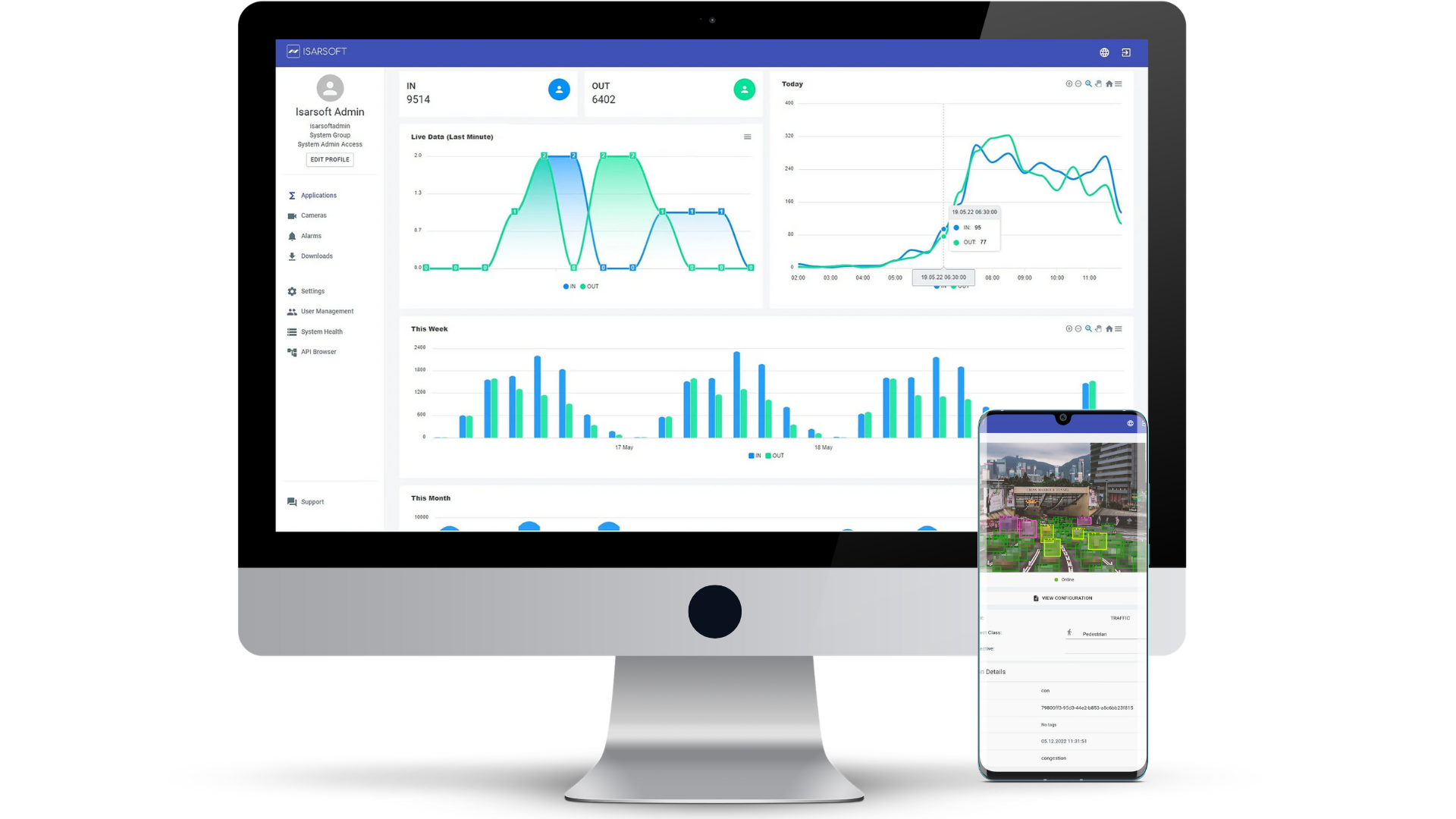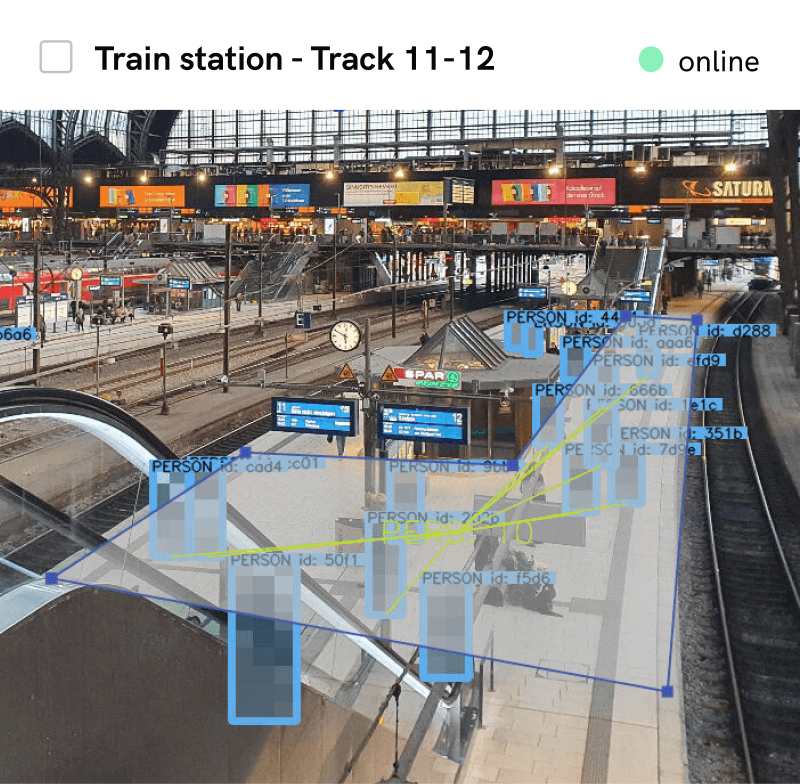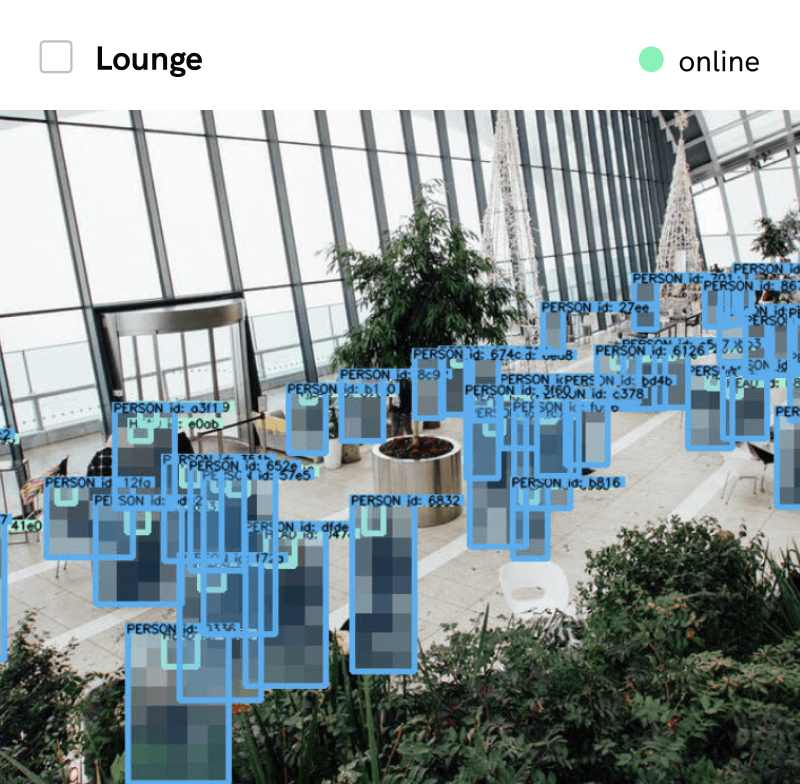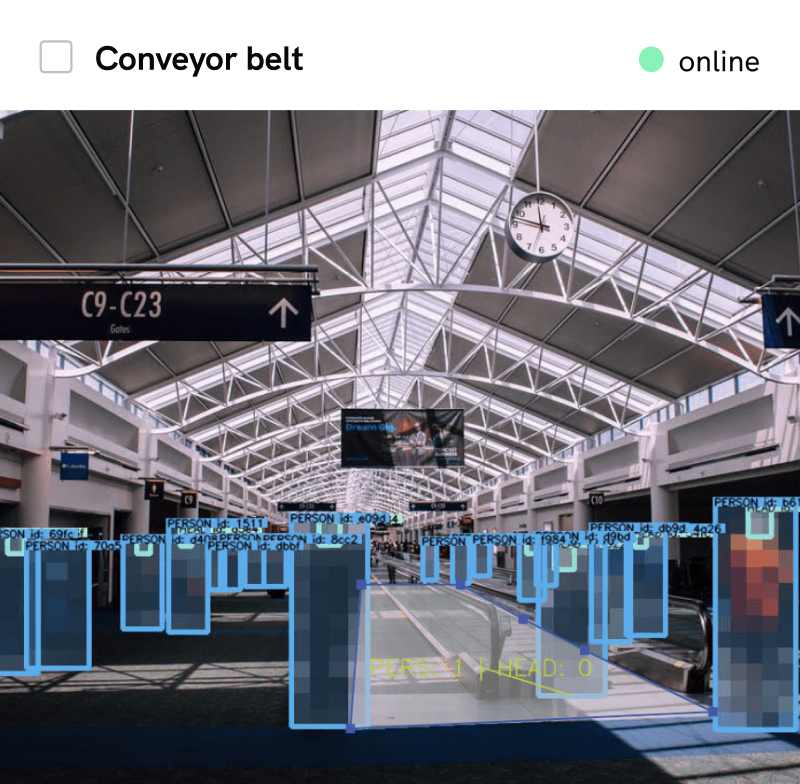AI in Airports
This article summarizes the role of AI at airports, and how it improves operational efficiency, enhances safety and the passenger experience. AI enables intelligent decision-making, personalized experiences, and cost savings due to optimized resource planning. Lastly, this article includes the possible risks and how they should be handled.
Published
July 12, 2023

Introduction
Importance of Airport Management
The economic growth, globalization and technical improvements such as online booking had a great impact on the aviation industry. As the possibilities grow and the interest of civilization changes, people get more and more into traveling and visiting new unknown places.
The travel demand will continue to grow, the International Air Transport Association (IATA) forecasts the number of global passengers will almost double by 2037, reaching 8.2 billion annually. This number means a great success for the industry but also a huge responsibility for airports and airlines, because of great safety risks there have to be strict regulations for passengers, staff and airplanes as well. These regulations need observance thus good management to ensure safety regarding the processes at airports and the flight. The management processes need to be updated to handle the growth of passenger numbers.
Role of AI
As the number of passengers traveling through airports continues to increase and the risks as well, the role of AI becomes even more crucial. With AI-powered systems, airports can effectively handle the growing passenger volume and address the associated challenges.
AI in airports is revolutionizing the aviation industry by leveraging advanced technologies to enhance safety, efficiency, and the passenger experience.

Understanding Airport Challenges
In the dynamic world of aviation, airports face a multitude of challenges that require innovative solutions.
Safety Aspects
Ensuring the highest safety and security, is a tough mission, especially with growing passenger volume. Special about aviation or airports in particular are the strict safety procedures, including comprehensive safety checks of staff, passengers and their luggage.
The main goal for airlines and thus airports is to bring passengers safe to their destination, that is why the procedures above are necessary.
It has to be prevent, that:
- Dangerous objects such as knifes, guns and other things which could get used as a weapon get into the plane
- Illegal substances are taken to the destination, or onto the plane in general
- Persons who are not allowed to fly enter the plane and further an other country
- Non-staff persons enter
Besides the safety the passenger experience is an important factor.
Streamlining Passenger Processes
Managing huge passenger volumes and optimizing operations to ensure processes are according to plan for a positive customer experience and unhindered departures. Important is the Passenger Flow for the satisfaction of passengers are fast passage of:
- Check-In & Baggage drop-off
- Security-checks
- Pick ups at the luggage carousel
Creating Pleasant Infrastructure
Long waiting times due to early arrivals because of buffer times or transit flights are part of the daily business at airports. Important for satisfied passengers are attracting stores as well as good, diverse restaurants near the gates to spend time. Besides that waiting areas equipped with necessaries like different power outlets, smoking areas and comfortable seats at the gates are key for a good passenger experience.

How AI Can Transform Airport Management
AI has the potential to change air traffic management. By analyzing vast amounts of real-time data, including flight trajectories, weather conditions, and airspace capacity, AI algorithms can optimize routes, reduce congestion, and improve airspace utilization. The impact improved flight efficiency, shorter travel times, and improved sustainability.
It also has a great impact in enhancing safety at airports. By analyzing data from various sensors and systems, AI algorithms can detect anomalies, predict potential risks, and provide early warnings to airport personnel. AI is able to detect unauthorized entries and can identify potential threats like left luggage.
In summary the customer experience and safety are improved, especially in areas of interest for passengers.By analyzing passenger data, AI algorithms can offer improved services, because of real-time information. AI can also facilitate seamless and contactless processes, such as automated check-ins, biometric authentication to relieve employees and shorten waiting times.
AI-based Solutions for Airport Optimization
Self Check-in & Baggage Drop Off
This solution enables a quick and independent pre-flight experience, which partly already exists at airports. Passengers can scan their travel documents, select seats, print boarding passes, and even tag their own baggage, the ability is given due to Artificial Intelligence. This modern technology streamlines the check-in process and minimizes the need for manual assistance, which reduces the cost for staff. These factors are influential for an improved customer experience and better total efficiency.

Passenger Flow Management Systems
These systems can identify congestion points, optimize queue management, and provide real-time alerts to airport staff. By understanding passenger flow patterns, airports can optimize staffing, streamline security checkpoints, and improve the overall passenger experience. Isarsoft Perception offers this functionality read our article to learn more.
Benefits and Impacts of AI on Airport Management
- Enhanced Operational Efficiency: AI-powered systems can automate and optimize various airport processes, such as baggage handling and security screening. This leads to improved efficiency, reduced delays, and increased throughput, allowing airports to handle growing passenger volumes more effectively.
- Intelligent Decision-Making: AI algorithms can process large amounts of data and provide actionable insights to airport management. This enables informed decision-making in areas such as resource planning, maintenance scheduling, and capacity management, leading to more effective utilization of resources and improved operational performance.
- Improved Safety and Security: AI contributes to enhanced safety and security at airports. Intelligent video surveillance systems powered by AI can detect suspicious activities, identify potential security threats, and enable proactive response measures. AI algorithms can also analyze passenger data and profiles to identify high-risk individuals or suspicious behavior, strengthening security measures.
- Personalized Passenger Experience: AI enables airports to provide personalized services and experiences to passengers. Through the analysis of passenger data, AI algorithms can offer tailored recommendations, real-time information, and personalized assistance, enhancing passenger satisfaction and engagement.
- Cost Savings and Revenue Generation: Optimization and automation driven by AI in various airport processes can lead to cost savings through improved resource utilization and reduced operational inefficiencies. Additionally, AI-enabled data analytics can uncover new revenue opportunities by identifying trends, demand patterns, and areas for service or process improvements.
Challenges and Considerations
Ethical Considerations
AI algorithms should be developed and deployed ethically, including fairness, transparency, and accountability. It is important to ensure that AI systems are designed and monitored to avoid bias and promote fair treatment of all individuals. Besides that, the privacy of passengers is the major concern when it comes to AI, because of collecting and processing vast amounts of personal thus sensitive data, including biometric information.
Human-Machine Collaboration
Integrating AI systems into airport operations requires effective cooperation of humans and machines. Ensuring a smooth interaction and understanding of the roles and capabilities of humans and AI is significant. Training airport staff to work along with AI systems to maintain a balance between automation and human capabilities are key factors.
Regulatory and Legal Frameworks
The adoption of AI in airports changes legal and regulatory specifications. Compliance with data protection regulations, liability for AI-generated decisions, and ensuring transparency in AI algorithms are important factors before implementing new tools and devices.
Change Management and Stakeholder Acceptance
Implementing AI technologies in airports requires organizational and especially cultural changes. Opposition to change, lack of awareness or understanding, and concerns about job displacement among airport staff may pose challenges. Effective change management strategies and clear communication are needed to ensure a successful adoption of AI solutions.
Future Trends and Innovations
Biometrics and Seamless Travel
Biometric technologies, such as facial recognition and fingerprint scanning, will become more prevalent at airports. This will enable seamless and contactless passenger processing, including automated self-service check-ins and boarding procedures that reduce or prevent the use of paper completely.
Smart Airports
Smart airports are airports that use intelligent systems such as sensor devices, which are made to enhance operational efficiency. Airports will increasingly adopt the concept of smart airports and will leverage IoT (Internet of Things) such as LoRaWAN. This includes smart infrastructure, automated processes, real-time data analytics, and predictive capabilities for improved decision-making. The goal of smart airports is the improvement of staff performance, optimization of passenger flows, improved sustainability as well as increased airport security.
Robotics and Automation Robots
Automated systems will get an indispensable role at airports, performing tasks such as deliveries, cleaning, and customer service. The Check-in process will get improved soon, robots are able to handle the check in of passengers just as good as a conventional kiosks. The passport can get scanned and after the personal information for the flight is verified, boarding pass and bag tags will get printed and the robot can guide the passengers to the baggage drop off location. Because of lack of personal robotic assistants will help passengers with several inquiries, provide directions, and offer personalized recommendations.
Conclusion
In conclusion, the integration of AI technologies in airports have great impact for the addressed challenges multiplied by the growing passenger volume. AI can significantly improve airport management, improve operational efficiency, what and boosts the passenger experience.
Like with any new technology, there are risks and considerations associated with the use of AI. Ensuring the reliability of protection privacy and data security is superficial.
After a successful implementation and with an effective management, AI has the potential to revolutionize airport operations, improve safety and security, enhance passenger satisfaction, and drive overall efficiency. By embracing AI technologies while addressing associated risks, airports can better meet the demands of a growing passenger volume and create an enhanced travel experience for all.
More about Isarsoft
With Isarsoft Perception, your camera systems become part of your business intelligence. Whether the goal is to increase efficiency, customer satisfaction or safety, Isarsoft Perception provides the insights needed for informed decisions.

Contact us, to learn more about how to turn security cameras into intelligent sensors.
References
Optimize your business processes.
Improve business processes with video-based business intelligence from Isarsoft.









.webp)